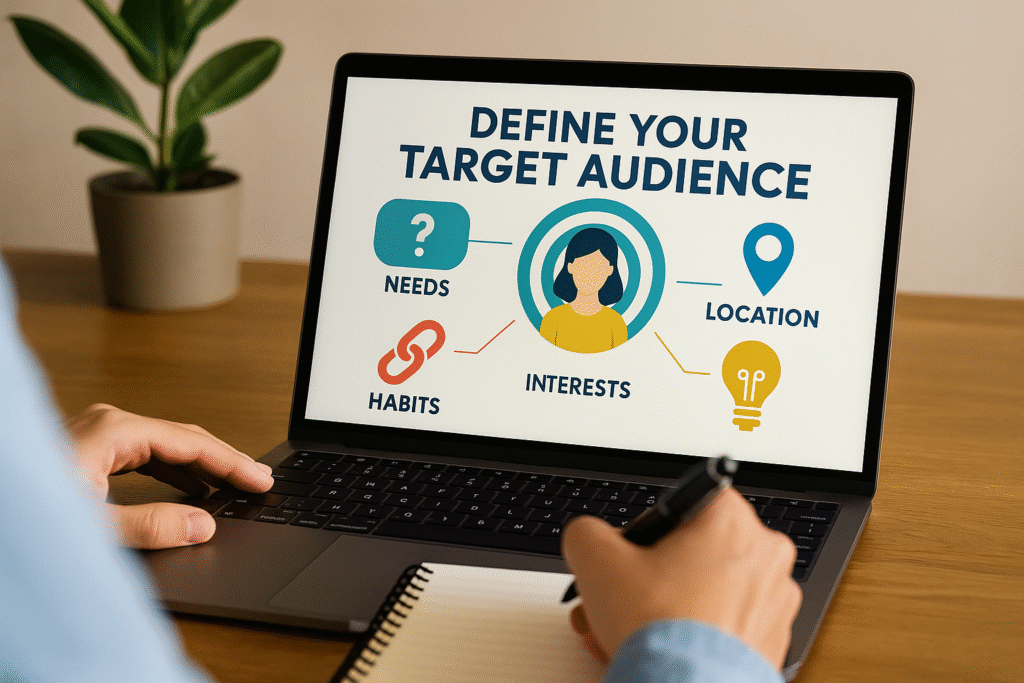One of the biggest mistakes new entrepreneurs make is falling in love with an idea and investing time and money before knowing if anyone will actually pay for it. Business idea validation is the process of making sure your concept solves a real problem for a real group of people—before you go all in.
Validating early can save you months (or years) of frustration, and help you build something that people actually want.
What Is Business Idea Validation?
Validation is the process of gathering evidence that your business idea has market potential. It answers questions like:
- Is there a real demand?
- Are people already spending money on this problem?
- Would they buy your solution?
- How big is the potential market?
Instead of relying on assumptions or gut feelings, you gather data, feedback, and proof.
Step 1: Define the Problem You’re Solving
Start by writing a clear, one-sentence problem statement. For example:
“Freelancers struggle to manage multiple clients without an efficient system.”
A good business idea always begins with a clear, specific problem. If you can’t articulate the problem, you’re not ready to validate a solution.
Step 2: Identify Your Target Audience
Who experiences this problem most intensely? Get specific:
- Age range
- Profession
- Location
- Pain points
- Buying behavior
Creating a buyer persona will help you target your validation efforts and marketing later on.
Step 3: Research the Market
Now it’s time to investigate. Look for:
- Existing solutions: Are there already businesses solving this problem?
- Demand: Use Google Trends, Reddit, Quora, and Amazon reviews to explore conversations about your problem area.
- Competitor analysis: If competitors exist, that’s actually a good sign—there’s demand. Study what they offer and where the gaps are.
Tools to use:
- Google Keyword Planner
- Ubersuggest
- AnswerThePublic
- Facebook groups and online forums
Step 4: Conduct Customer Interviews
This is the most powerful form of validation. Talk to real people in your target market and ask:
- What’s your biggest challenge with [problem]?
- How do you currently handle it?
- What solutions have you tried?
- How much would you pay for a better solution?
Aim to interview 10–15 people. Avoid leading questions—let them speak freely. Your goal is to learn, not to sell (yet).
Step 5: Build a Simple MVP (Minimum Viable Product)
An MVP is the leanest version of your product or service that still solves the core problem. Examples:
- A landing page describing your offer
- A downloadable freebie
- A one-on-one consultation
- A simple prototype or sample
Don’t wait to perfect it—launch something small and see how people respond.
Step 6: Create a Landing Page or Offer Page
Use tools like Carrd, Wix, or WordPress to quickly build a basic website that:
- Describes your solution
- Explains the benefits
- Includes a call to action (email sign-up, pre-order, free demo)
You can then measure interest by tracking:
- Page visits
- Click-through rates
- Email sign-ups
- Messages received
Step 7: Run a Small Paid Test (Optional)
If you have a little budget, run ads to your landing page to test:
- Which messages convert better
- What audience responds best
- How much it costs to get leads
Even $20 in ads on Facebook or Instagram can reveal useful insights.
Step 8: Pre-Sell Your Product or Service
One of the strongest forms of validation is revenue. You can offer:
- A discount for early adopters
- Beta access for feedback
- A waitlist with a deposit
If people are willing to pay, that’s powerful proof of market demand.
Step 9: Analyze Feedback and Pivot if Needed
Use what you’ve learned to answer:
- Is there a strong need?
- Are people willing to pay?
- What should I change to improve my offer?
Sometimes, validation leads to pivoting your idea, tweaking your audience, or changing the format. That’s a good thing—it’s part of the process.
Common Mistakes to Avoid
- Skipping interviews: Data is not enough. Talk to humans.
- Only asking friends/family: They’ll say “yes” to be nice.
- Ignoring competitors: Competition means demand—don’t be afraid of it.
- Overbuilding before testing: Focus on feedback, not features.
The True Value of Validation
Validation saves you time, money, and stress. It gives you clarity, confidence, and direction. You stop guessing and start building something people are asking for.
Before launching your business, validate your idea. Don’t just ask “Is this a good idea?”—prove it.

